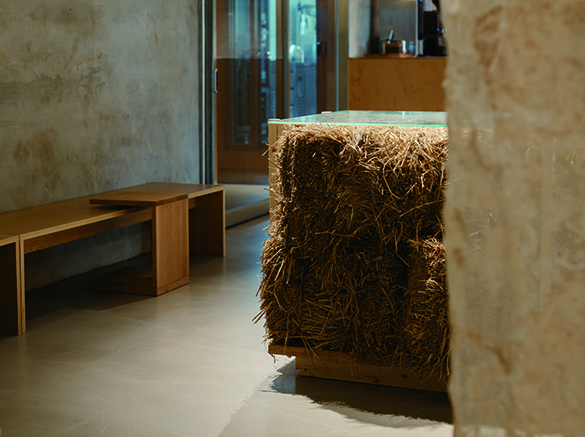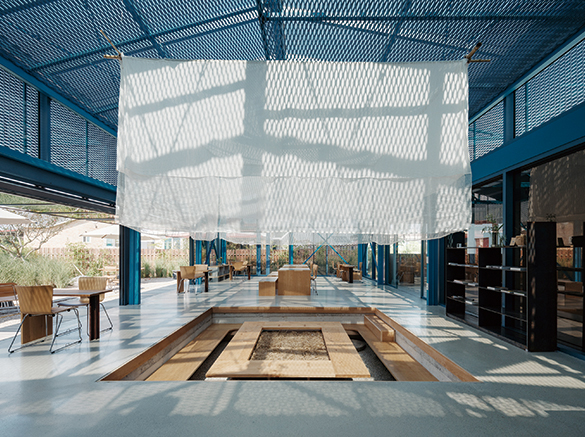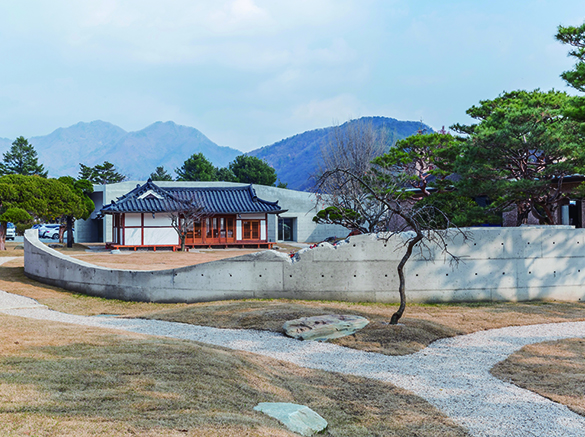SPACE November 2024 (No. 684)
① Interview Cho Byoungsoo principal, BCHO Partners × Kim Jeoungeun editor-in-chief
② Interview Jung Kyungil principal, YOUTHQUAKE, Youk Shimwon artist × Bang Yukyung
③ Interview Kim Green curator, ANNEX × Bang Yukyung
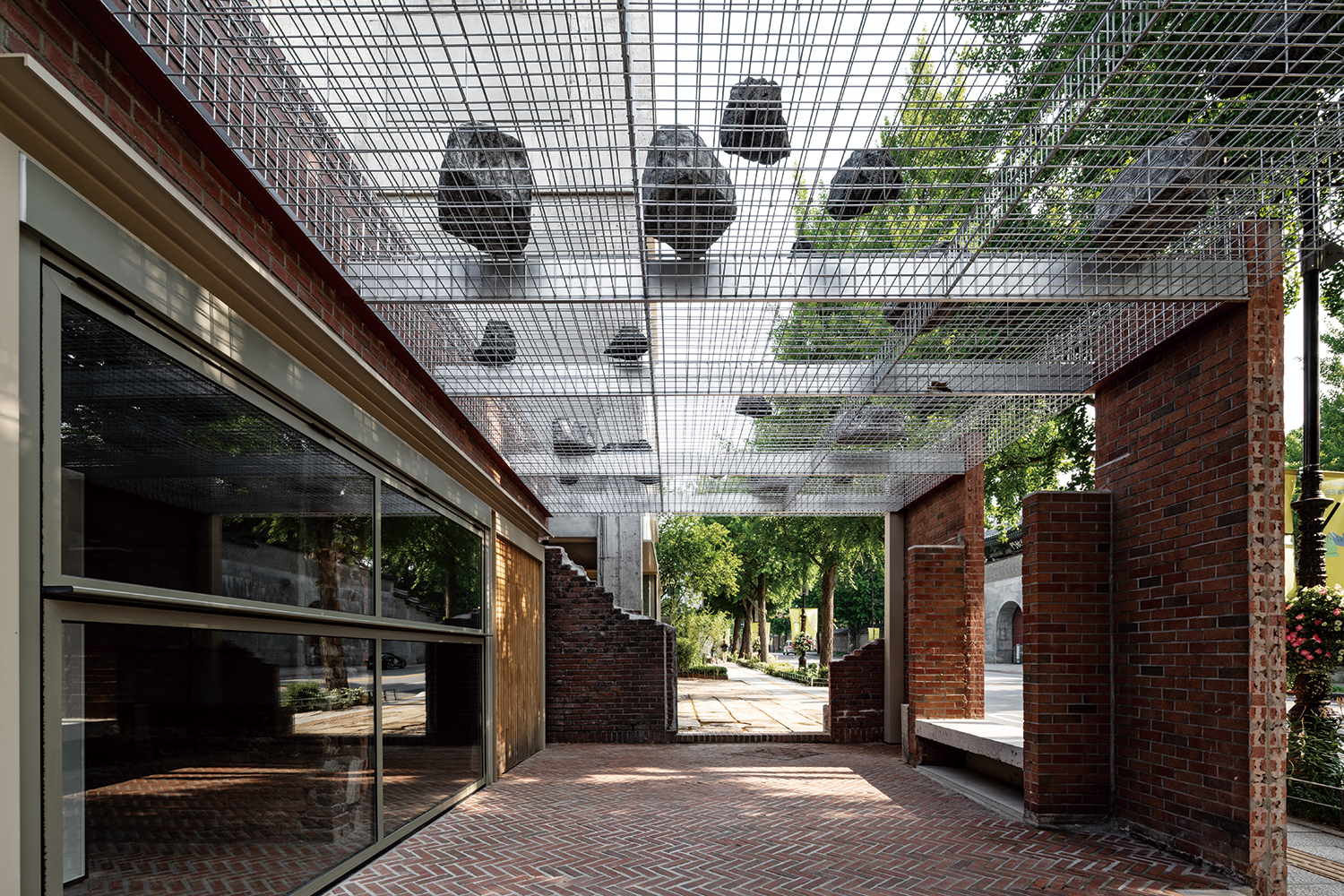
The front yard of Building A, YOUTHQUAKE. The enclosing wall was removed to create an open space which is connected to the street.
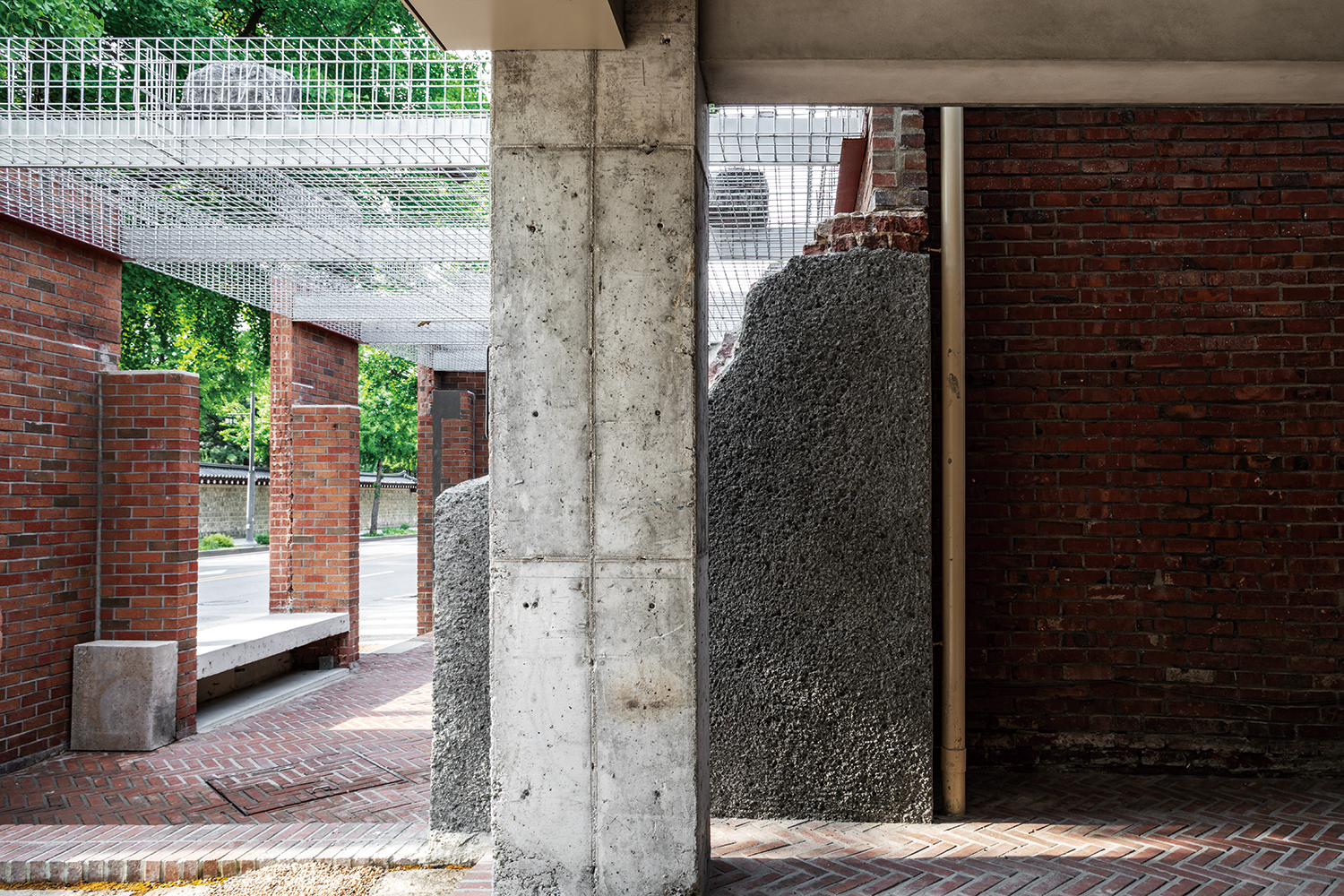
Front yard of Building A from Building B. The old building’s frame is exposed.
① Interview Cho Byoungsoo principal, BCHO Partners × Kim Jeoungeun editor-in-chief
Kim: You’ve worked on a lot of projects in Seochon. For example, there’s Onground Gallery/Café (2013, 2018, 2020, hereinafter Onground), which you use for yourself and on which you’ve developed as ‘re-born’ several times, there’s Mak Project Space (2021, hereinafter Mak House), and there’s the recently completed YOUTHQUAKE (2023, 2024). What do you think is the unique charm of Seochon?
Cho: Seochon is a unique neighbourhood. Many people in the arts and cultural sector live and work here. Maybe you, the editor-in-chief, could move here after you retire.
Kim: It’s a popular neighbourhood, so maybe, but it’s probably too expensive to move! (laugh)
Cho: If you compare with areas like Gangnam, the rent is not that expensive. The size is fairly small. The biggest difference from Seongsu-dong, which is popular nowadays, is the size. Seongsu-dong was originally a light industry area, so each land parcel area is at least 100 to 300-pyeong, and the buildings are tall with large volumes. But here, it’s a residential area, so the land parcels are small, and it’s zoned according to the district units plan, which prohibits combining lots larger than 60-pyeong. That means people with smaller dreams come here. (laugh) People who have greater sensitivity and cultural interests, such as people who write or design, which does not require large spaces. I think it was appropriate to introduce a less prominent building than a work of architecture that really stands out. People also like to walk around spaces on a smaller scale.
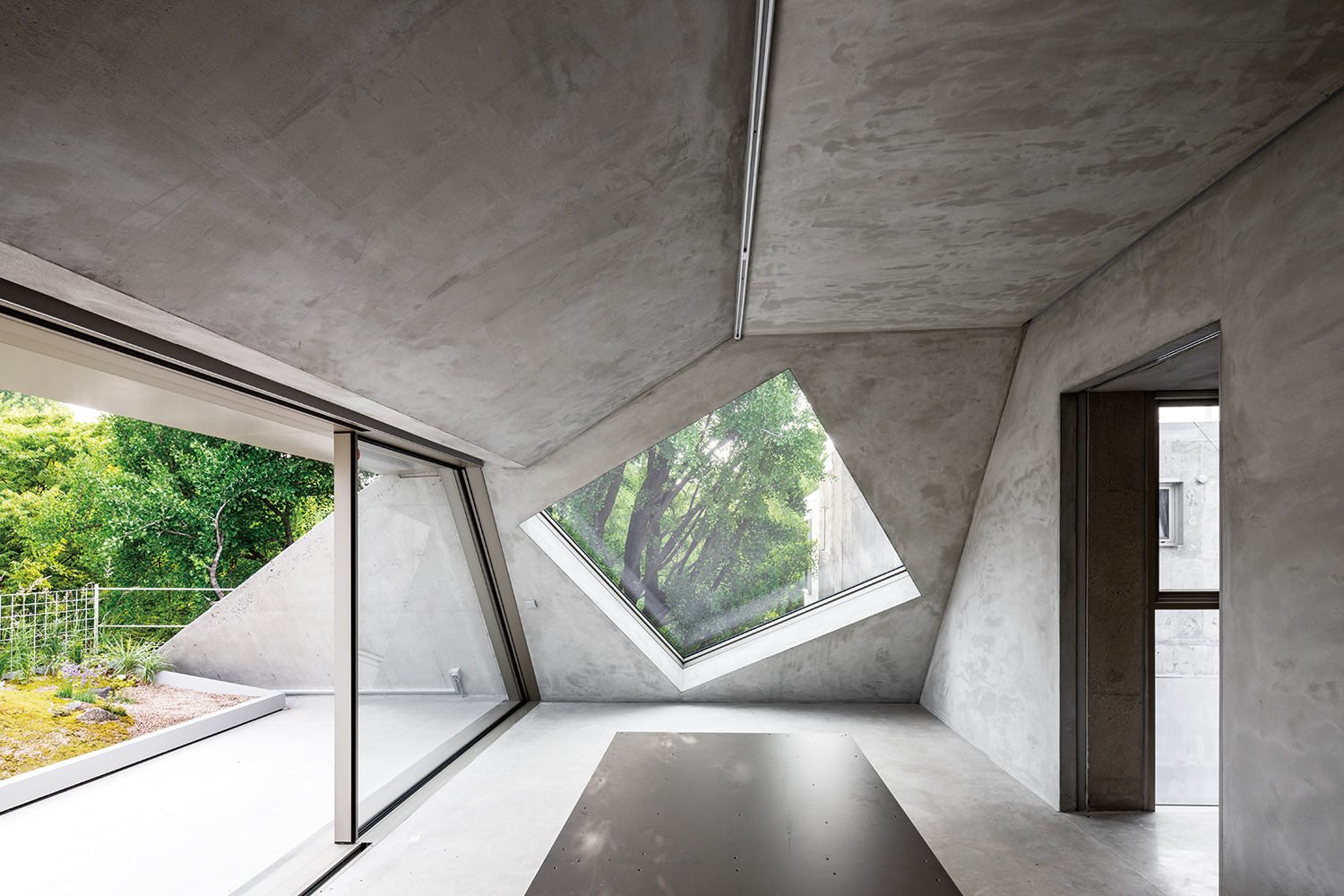
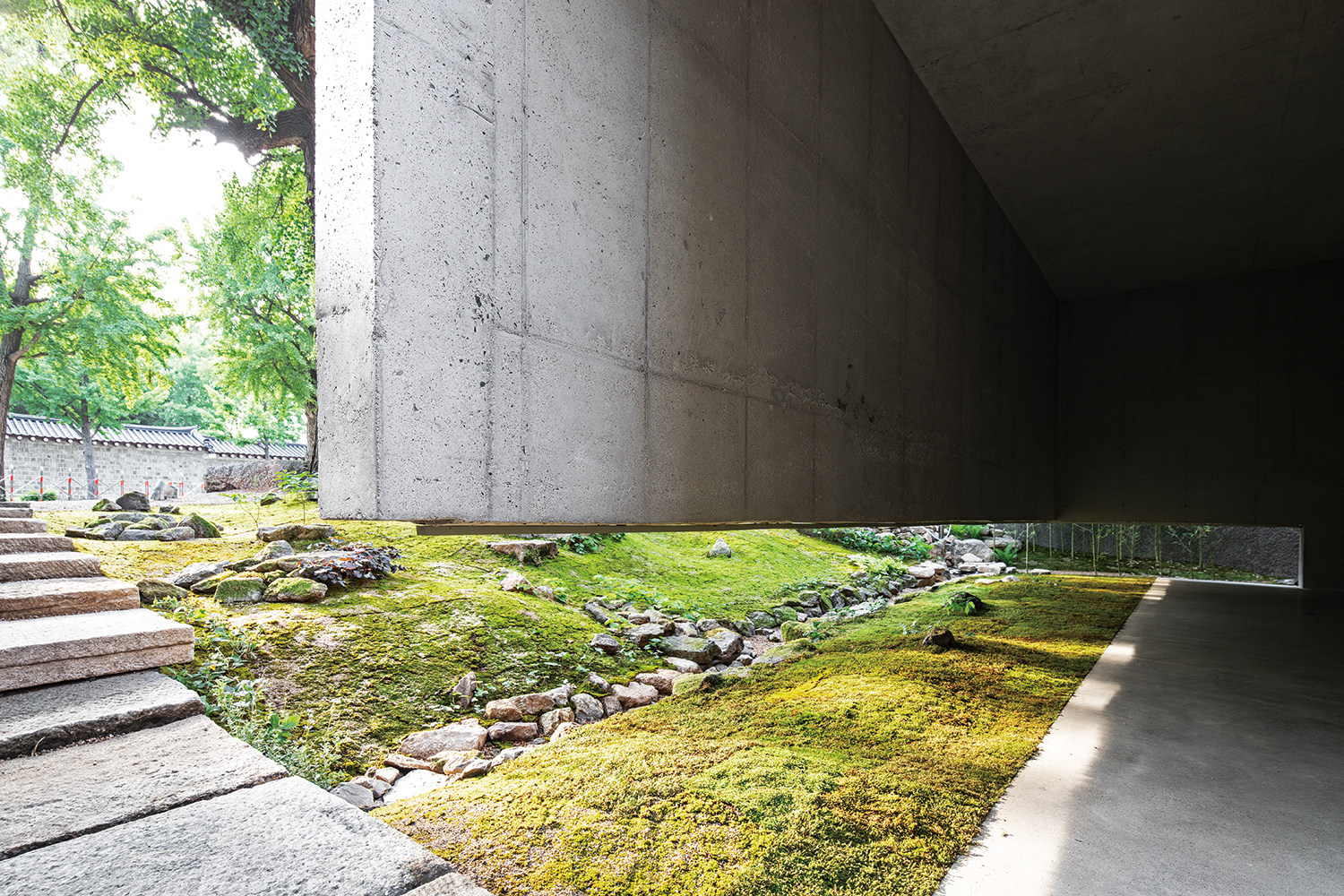
The entrance to Building C. The lower part of the first floor wall is floating. A moss-planted garden continues naturally along the slope.
Kim: YOUTHQUAKE in Tongui-dong is a gallery space that embraces two renovated buildings (Building A and B) and one newly constructed building (Building C). It’s interesting to see how the buildings were repaired or constructed in different ways on three small land parcels that are unique to Seochon. In particular, the Gallery Jin building (Building A, 1977) designed by Yi Ku, the last prince of the Korean Empire, has been preserved and is of great historical significance. When I thought of the ‘Gallery Jin’, I always thought of a high brick wall, but when part of the wall was removed, the street façade changed completely. I also heard that the same thing happened to Mak House.
Cho: That’s right, we devised a big window facing the alley and a front yard facing the main street. It was similar when we repaired the Mak House. There was a heavy cement wall facing the street outside of the old building, which used to be a restaurant. On the day we tore it down and the hanok was revealed, Lee Jongmyung, the principal of café mk2, took a picture and sent it to me, saying it was big news in the neighbourhood, as if the Berlin Wall had come down. (laugh) Once the wall was removed, we used transparent reinforced plastic left over from another construction site and screwed it to a thin wooden frame. The reinforced plastic had a certain level of insulating effect, so it could be used as an exterior material. The transparent acrylic illuminated the inside of the hanok and reflected the street, changing the cityscape.
Kim: I’m also impressed by the gabions that have been installed and the stones that have been placed on them on the ceiling of the front courtyard of Building A, which was created after the walls were removed. This gives a sense of being opened, but also a sense of enclosure and territoriality.
Cho: It’s a structure that can be used to hang something if someone wants to install a sculpture or have an outdoor event. Like an exhibition space and a playground that extends from the inside. Because of the loading issues, the stones on top of the gabions are not real stones, they are something made out of FRP. They are sold on Amazon. (laugh) I’ve worked on a similar design in the U.S., where I was looking for artificial stones like that which would avoid putting pressure on the structure. If you look at the roof garden at the Museum of Modern Art (MoMA) in New York, designed by Ken Smith in 2005, there are similar stones. Such a landscape seemed very uncanny to me, so I asked Ken Smith when he came to Korea as a jury member for the design competition for Nodeul Island, and he said that MoMA also made all the planting out of plastic to make the garden easier to maintain. It could be seen as a kind of pop art concept. At YOUTHQUAKE, we suggested it because it seemed to fit the working style of the client, artist Youk Shimwon.
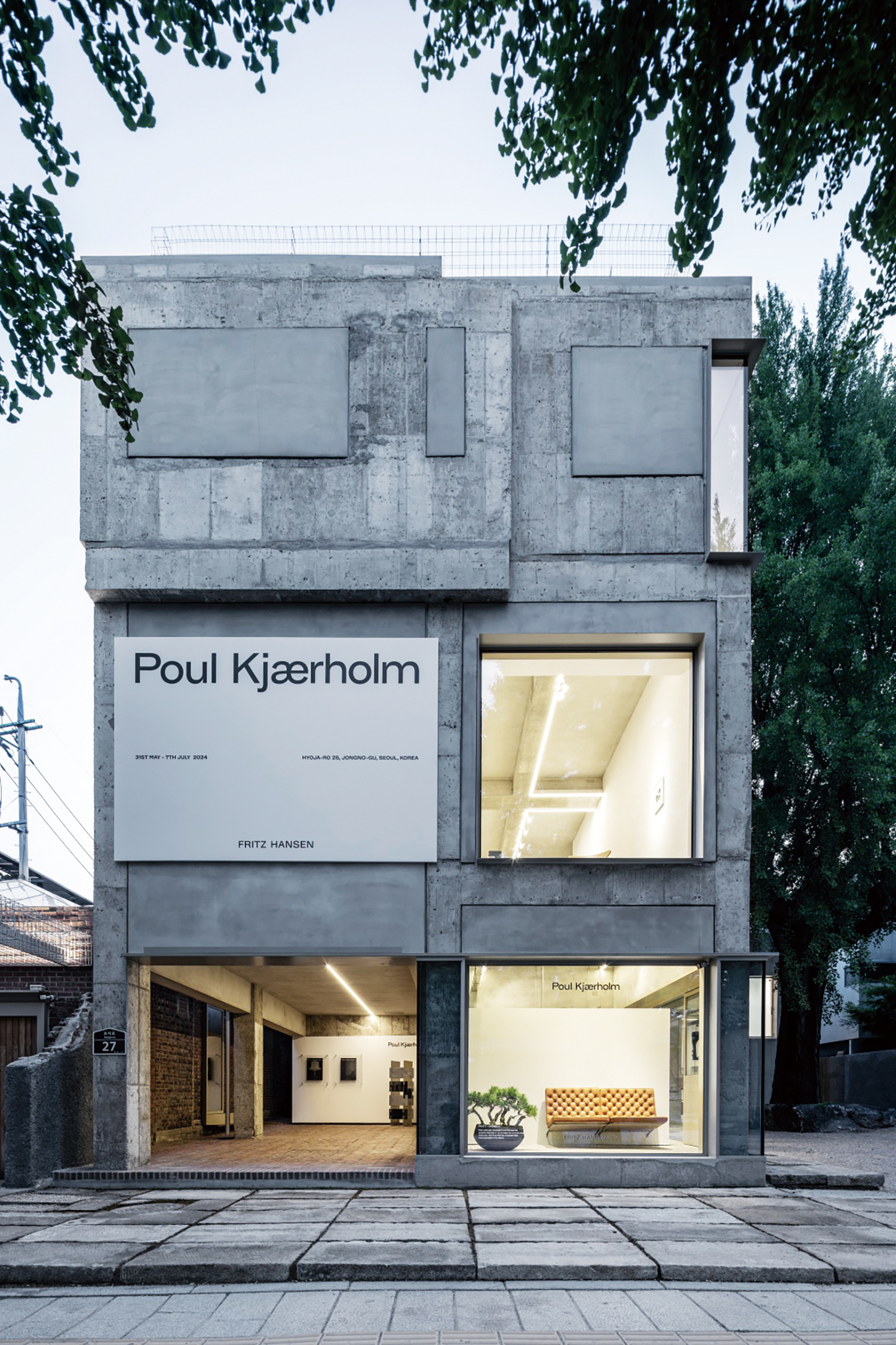
Kim: The way you play with the windows in Building B, which are either pierced or blocked, is interesting.
Cho: Building B was probably built in the 1970s or 1980s, and it seems to have been repaired several times over the years. Originally, the lower floors were used as neighbourhood living facilities and the upper floors as residential, so it had a lot of openings and a cluttered appearance. It was going to be used as a gallery, but the construction costs were not generous, so first we ripped out the things that were attached to it, bricked up the windows and plastered it. It was quite nice, like a patchwork quilt. (laugh) So we just left it the way it was, with a plaster finish. I think the process of making decisions on the spot in re-born architecture is interesting. It changes depending on your perspective. We also lowered the parapet on the roof and added a gabion railing. If it was Seongsu-dong, we wouldn’t have had to cut it down, but in this neighbourhood, the difference in the height of the parapet alone makes a big difference. As I said earlier, Seochon has buildings and streets on a smaller scale, so you have to pay attention to the more minute and trivial details.
Kim: The old ginkgo tree in front of Building C is very nice. Because the area in front of the ginkgo tree is empty, it looks like there is no building. On the other hand, as the outdoor space gradually expands from Building A, it also looks like a small park.
Cho: The ginkgo tree was the most important element of the site. We designed the new building to be as simple as possible so that the ginkgo tree could stand out. The elevation facing the ginkgo tree was raised 60cm from the ground floor, so that the garden could be pushed into the building. From the inside, the raised, column-free wall looks like a screen. Sliding doors installed on the inside of the wall can be raised and moved aside to create a wonderful event space on the first floor. So, if we have an exhibition opening event, we can project a video on this wall.
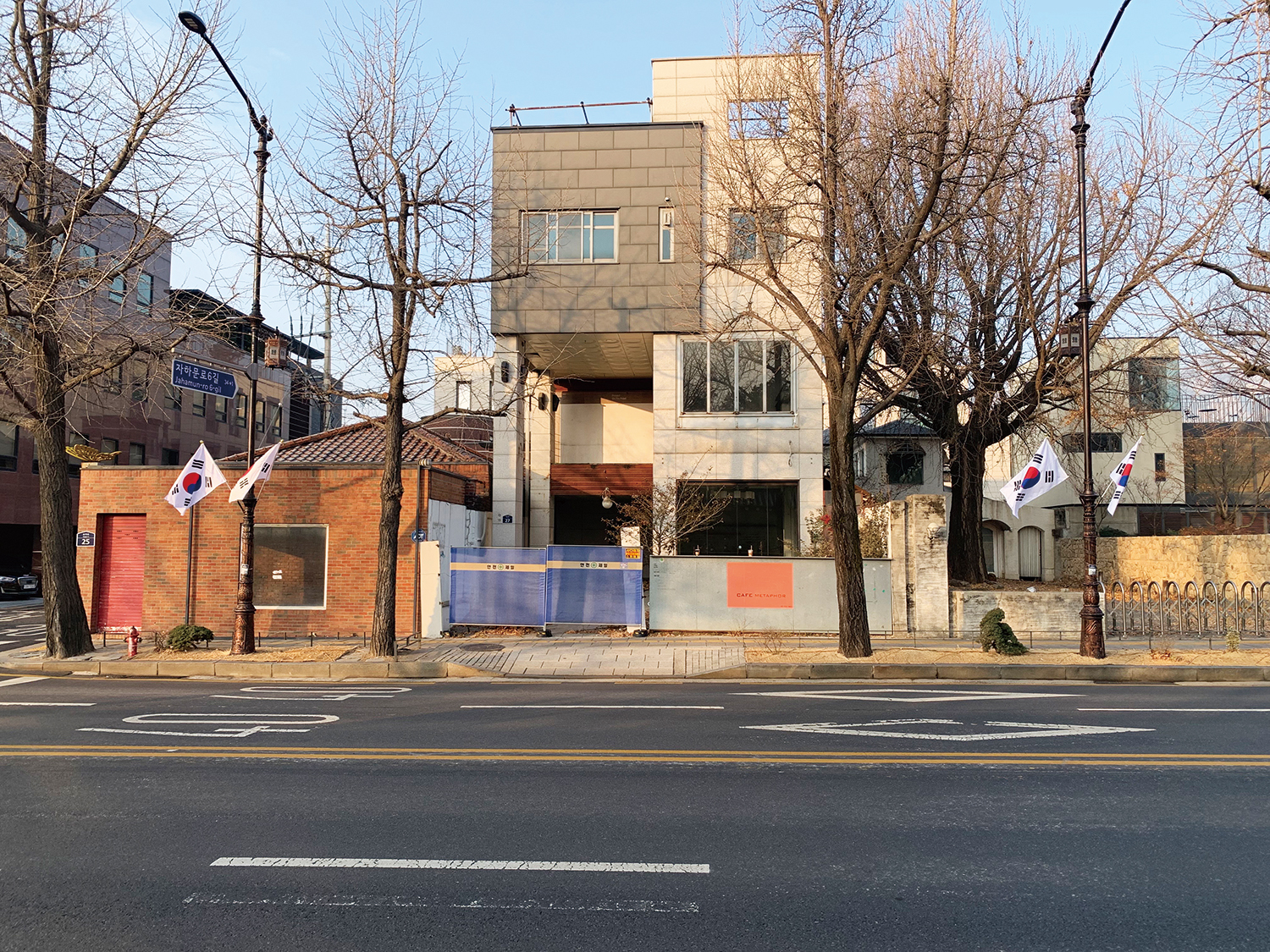
Façade before alteration. The brick building on the left is Gallery Jin (1977). ©BCHO Partners
Kim: For Building A, we kept the existing timber structure and covered it with a glass roof. You first used this approach in the Onground. When you recollected the moment in Onground, when you tore out the walls and roofing tiles to reveal the hidden timber structure, you said it was so beautiful to see the sunlight coming in through the gap between the wooden boards. You covered the top of the wooden boards with glass to keep out the rain and wind while letting in the light. You repeated this approach in Park Taejun Memorial (2017) in Gijang, where you recycled an existing house, and then again in YOUTHQUAKE. How does this approach form a variation in your work at BCHO Partners?
Cho: The second attempt was at Queen Mama Market (2015). This time, we inserted glass into a gabled roof structure and covered it with cedar wood. There’s a big difference between putting the wood under the glass roof and putting it on top of the roof.
Kim: It’s probably more expensive when the wood is exposed to the outdoor air, isn’t it?
Cho: Yes. Because the wood is exposed to the rain, you have to use thick wood without knots so that it doesn’t curl up. And if you’re going to put anything on top of the glass roof, you have to have a support structure, which is not a simple detail; you have to put rods or something in between the joints where the members meet and weld them together to hold them in place. In the long run, you have to maintain it so that it doesn’t rust. It can be considered a decent detail if it lasts at least 20 years. One of the reasons we decided to put the wood on the outside was so that you could see the light coming through the wood from the outside. It’s very interesting to look at from the outside, and it also keeps the heat of the sun on the outside, so it doesn’t get too hot on the inside. We thought about for a while, and for Queen Mama Market we decided to expose the wood on the outside. The wood only needs to be 18mm thick to be used on the inside. To be honest, on the inside, it doesn’t really matter if you cut off a piece of an apple crate and put it in. (laugh) So for the Onground, it has a slightly more haphazard and looser feel. But to put the wood on the outside, you need something that is 30 – 40mm thick. But because you’re putting wood on the outside, the glass side is explicitly visible from the inside.
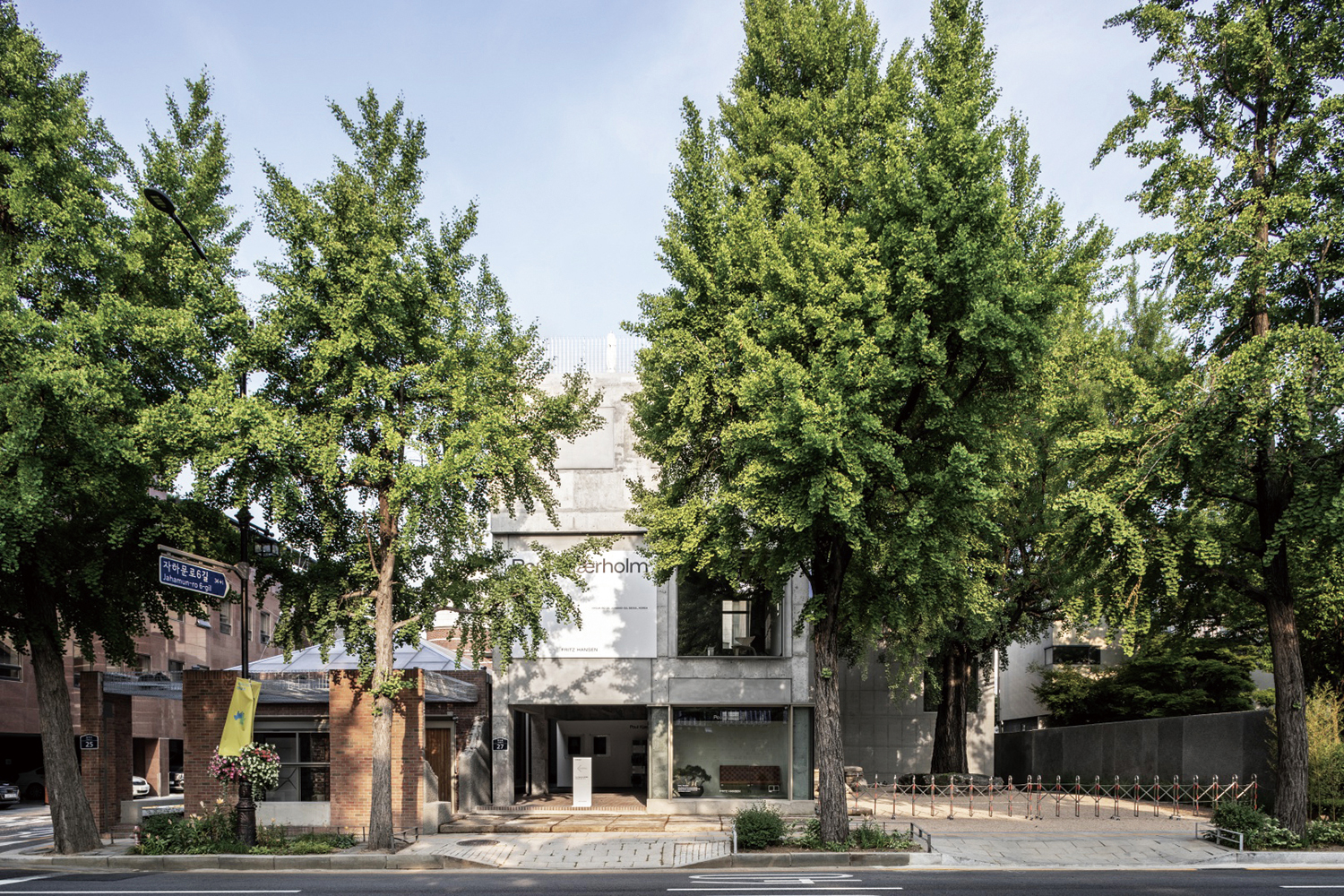
Façade after alteration. From left to right, Building A (Jin Gallery), Building B, and Building C.
Kim: You once said that Onground and Mak House were a kind of seeds of your architecture. I took that to mean that the lack of a client allowed you to experiment freely, which became the basis for your later work. Earlier, you said that ‘architecture is about making.’ I suddenly feel that your work is rich in ‘stories about the materials and methods of making’ that have grown from these seeds. I think it’s time to wrap up. I’d like to ask you about your plans for the future. I understand you will be exhibiting with artist Ko Somi in London next year.
Cho: I’m preparing an exhibition with fabric artist Ko Somi, with whom I collaborated at Blue Barn. She works with hanji and materials taken from the ground, and she’s a very serious friend, which is rare these days. I also paint with soil and stone dust. On the other hand,
I feel a kind of obligation to society because
I come from a generation that was privileged compared to the current generation of young architects. That’s why I’m trying to find ways to preserve our farming village landscapes with different professionals inside and outside the architecture industry, with the public and with local residents. I’m also fascinated to see how the works I’ve created with affection are used and transformed. In particular, my beloved Mak House will be newly born this fall as a THEILMA flagship store by THEILMA’s principal, Helen Jung and designer Harry Nuriev of Crosby Studio of Paris. I’m extremely excited about it.
Kim: I’m curious to see what the to-be-changed Mak House will look like. I’m looking forward to the next step in your journey. Thank you very much.
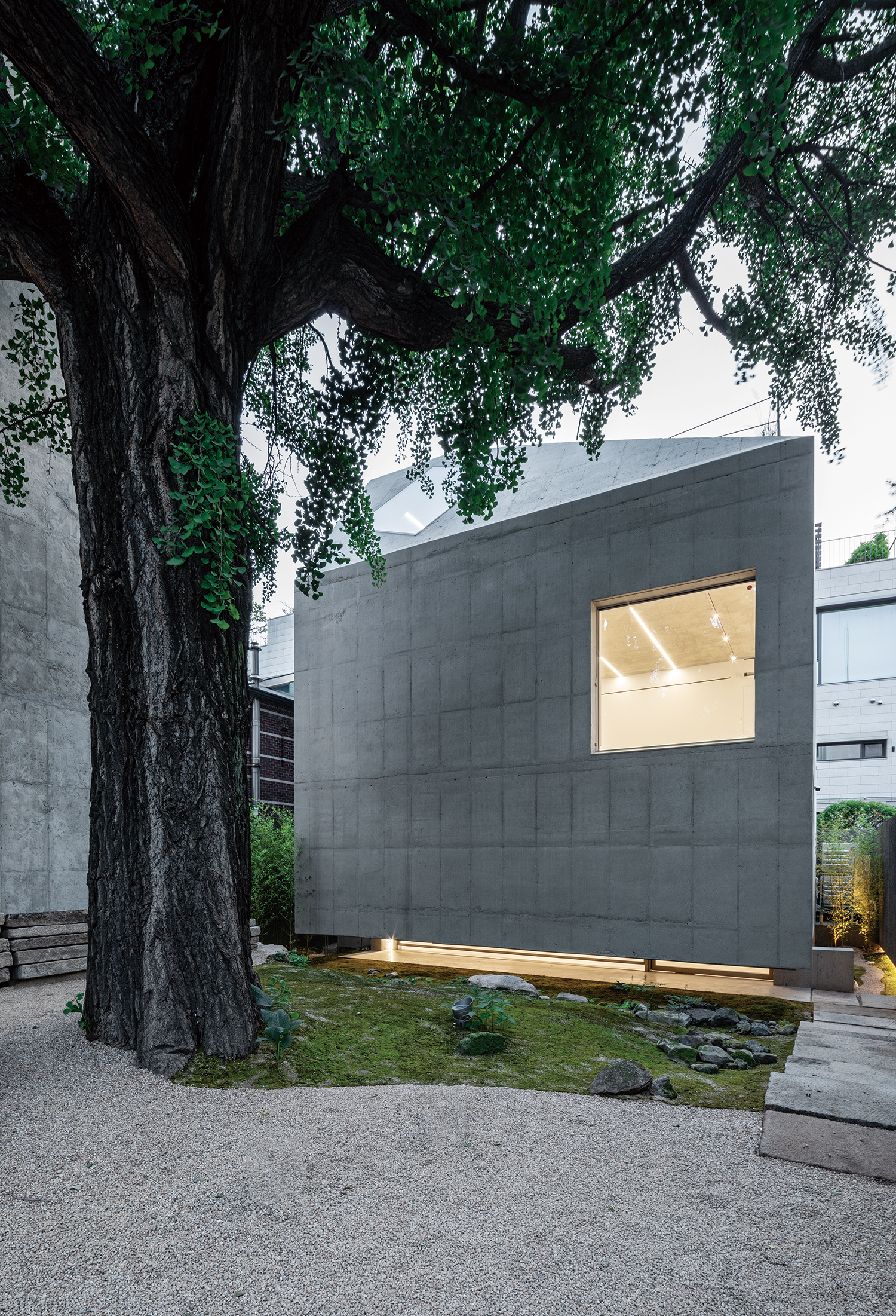
View of the Building C, YOUTHQUAKE
② Interview Jung Kyungil principal, YOUTHQUAKE, Youk Shimwon artist × Bang Yukyung
Bang Yukyung: Can you tell me about how you embarked on this project?
Jung Kyungil, Youk Shimwon: Our hometown is Cheongun-dong, and we came to appreciate this neighbourhood while taking a walk. I thought it would be so nice to build our house here one day, and it’s a dream come true. The first house I bought was the site of Building C. There was a small Japanese-style house, and I bought Building B and A with a time difference. I didn’t expect to purchase Jin Gallery (Building A), but I got it after twists and turns. We wanted to build a house that was charismatic but hidden, that would fit in with the neighbourhood. So, we asked Cho Byoungsoo to design it. We like the space he designed in Seochon, and the main reason was that we needed someone who was good at making small buildings with a delicate approach. We asked him to let the ginkgo tree in the yard be the protagonist.
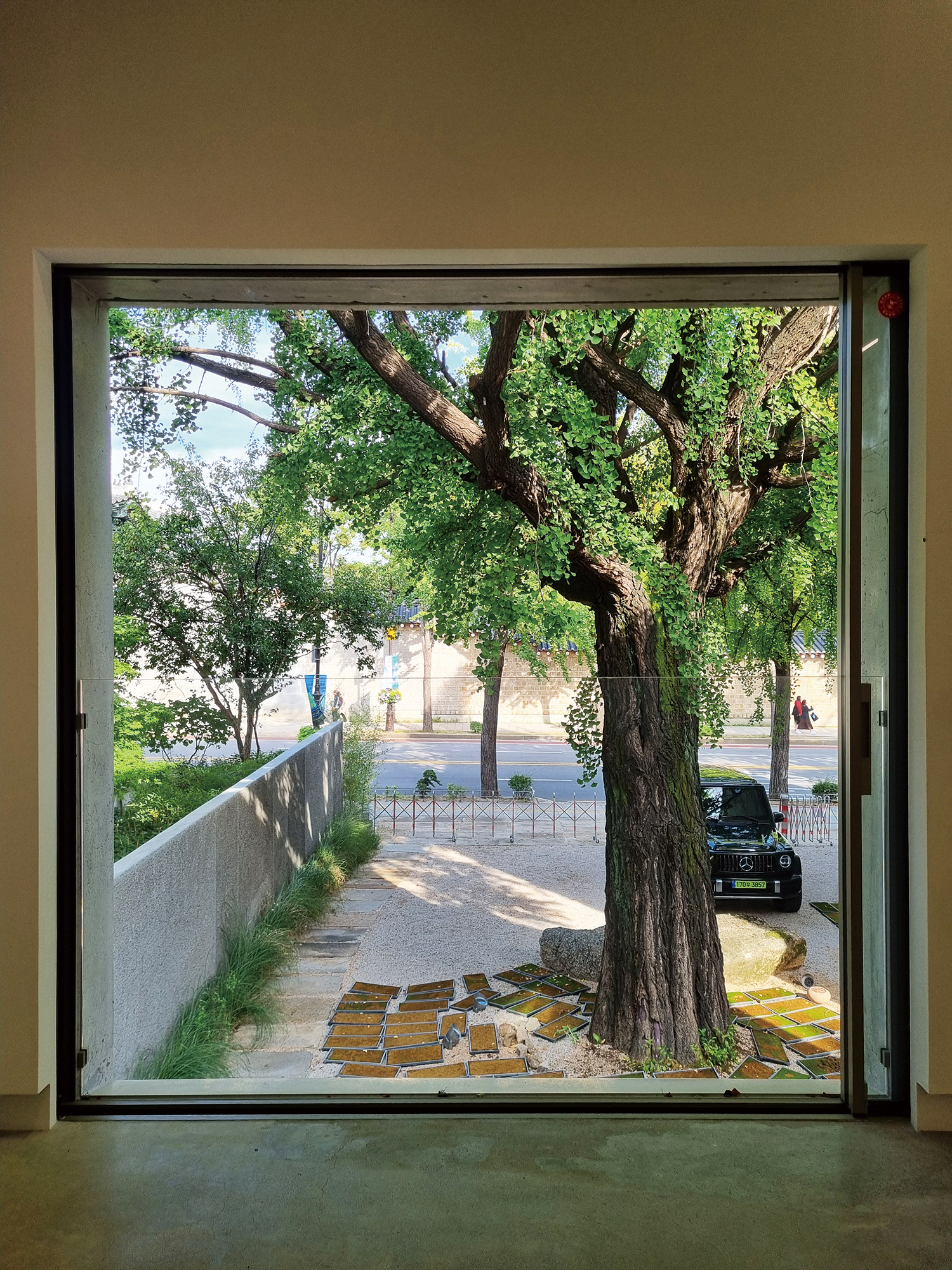
A ginkgo tree and Tongeui-dong street seen through the window on the second floor ©Bang Yukyung
Bang Yukyung: You recently held the opening exhibition. What was the reaction?
Jung Kyungil, Youk Shimwon: We hosted the exhibition ‘Poul Kjærholm’ at Fritz Hansen, and we had a lot of visitors. I think it was the influence of the architect. The exhibition was held in Building A and B. In fact, Building A was not well suited to the exhibition. I filled it with texts without exhibits, but people engaged with it all the way through without complaining. The old house was very hot inside even with the air conditioner on. I think they thought they could tolerate the environment because the space was good. I appreciate the audience’s patience and wisdom.
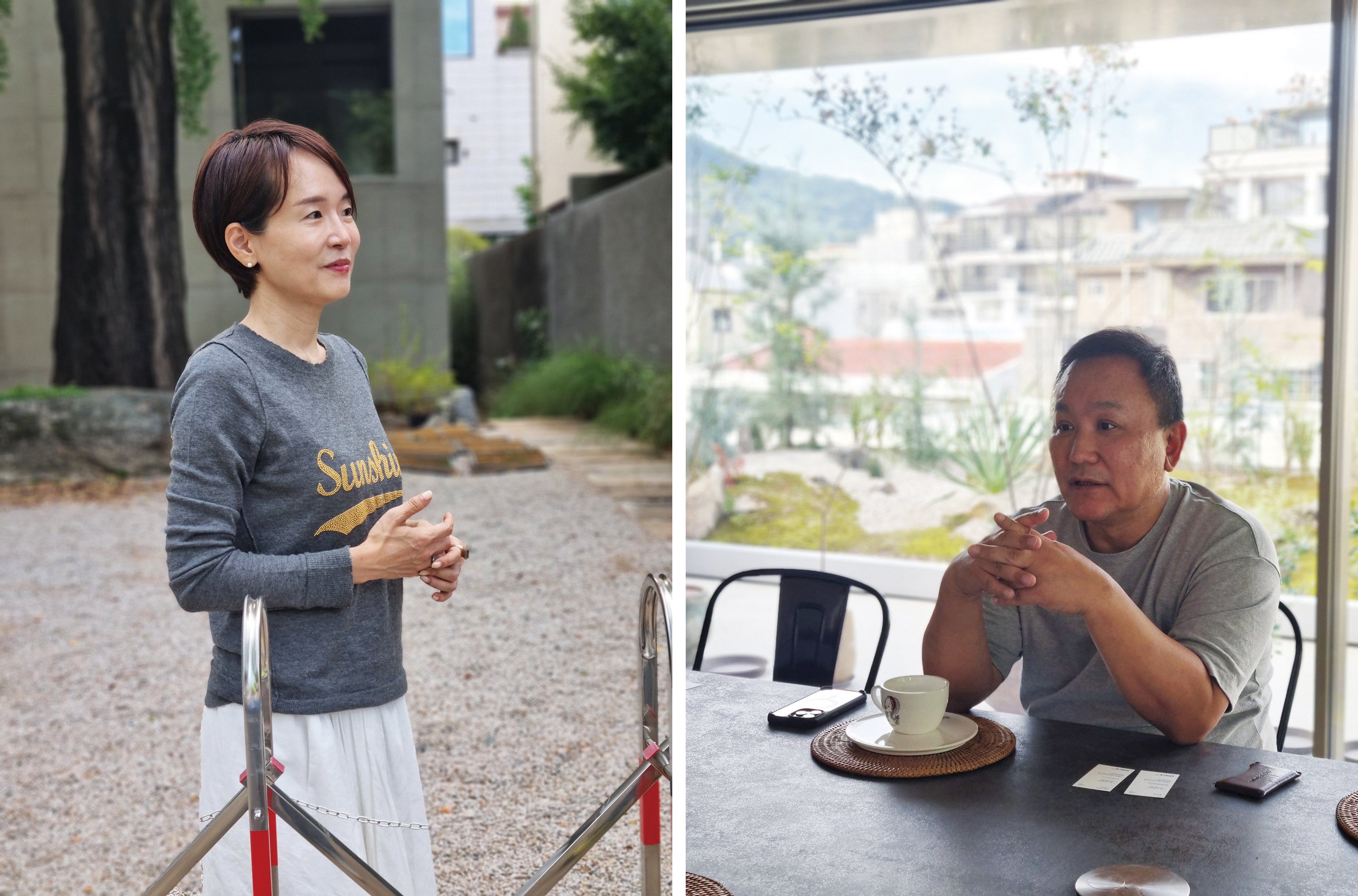
The clients, Youk Shimwon and Jung Kyungil ©Bang Yukyung
Bang Yukyung: Creating the front yard of Building A meant donating your personal land to the street. Was this okay?
Youk Shimwon: It used to be a place that people hesitant to enter. I think it is rather agreeable to create an opening in the wall and to introduce a kind of neighbourhood park. It feels good to see people gathering there in the evening.
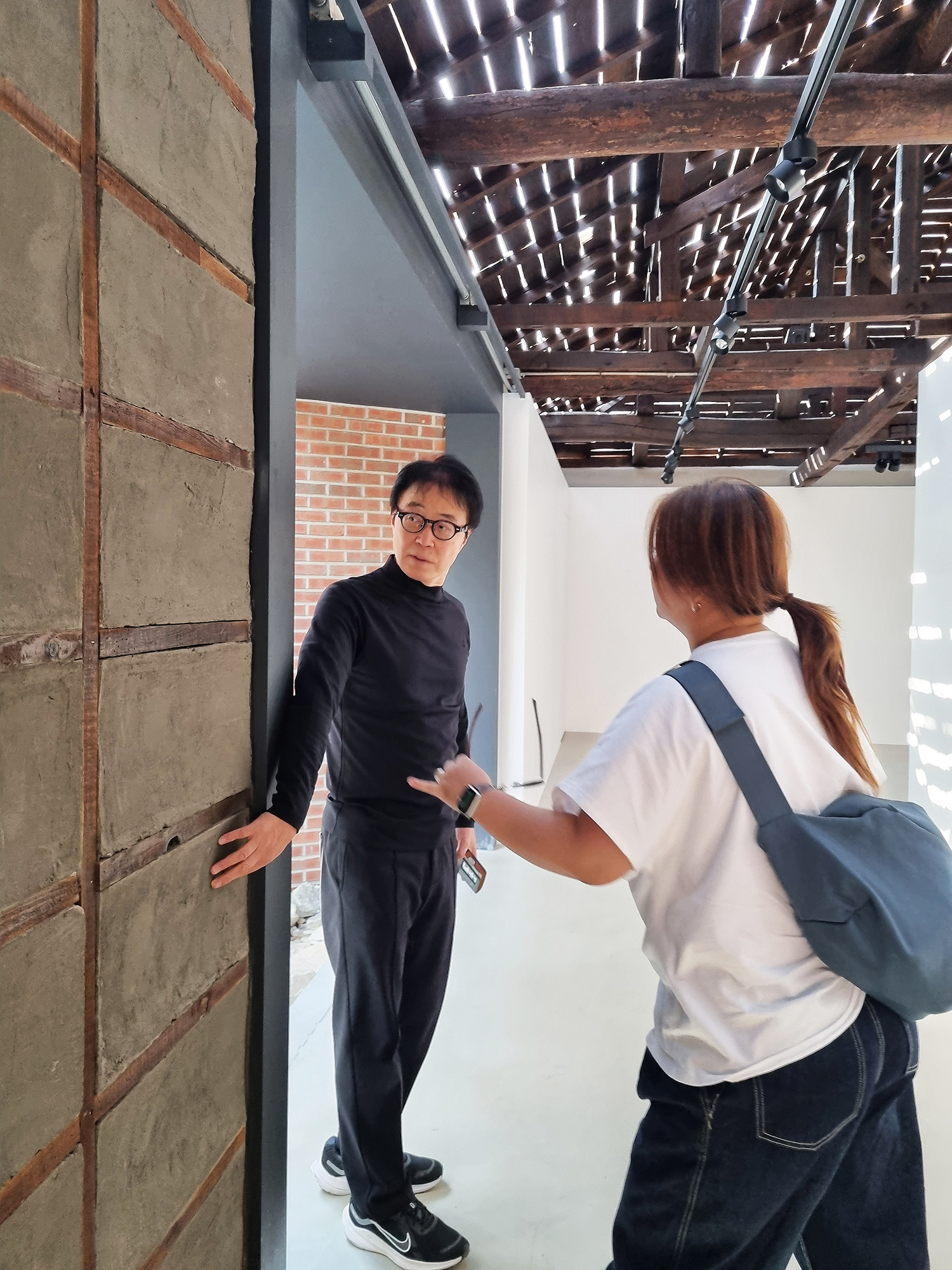
Site visit of Building A, YOUTHQUAKE ©Bang Yukyung
③ Interview Kim Green curator, ANNEX × Bang Yukyung
Bang Yukyung: You curated ‘Poul Kjærholm’, the first exhibition at YOUTHQUAKE. Did you face any difficulties in preparing it?
Kim Green: For the exhibition, white walls were installed inside and outside of Building A which exposed a lot of the traces of the old building, and Cho Byoungsoo decided to continue using YOUTHQUAKE. The sliding door between Building A and B was also installed for this exhibition. Originally planned as a door in Cho’s design, it was left as a window to be implemented later. We also suggested to the gallery that the door would prove necessary for future visitor circulation, and exhibition designer Cho Hyunseok designed one to suit the tone of the space.
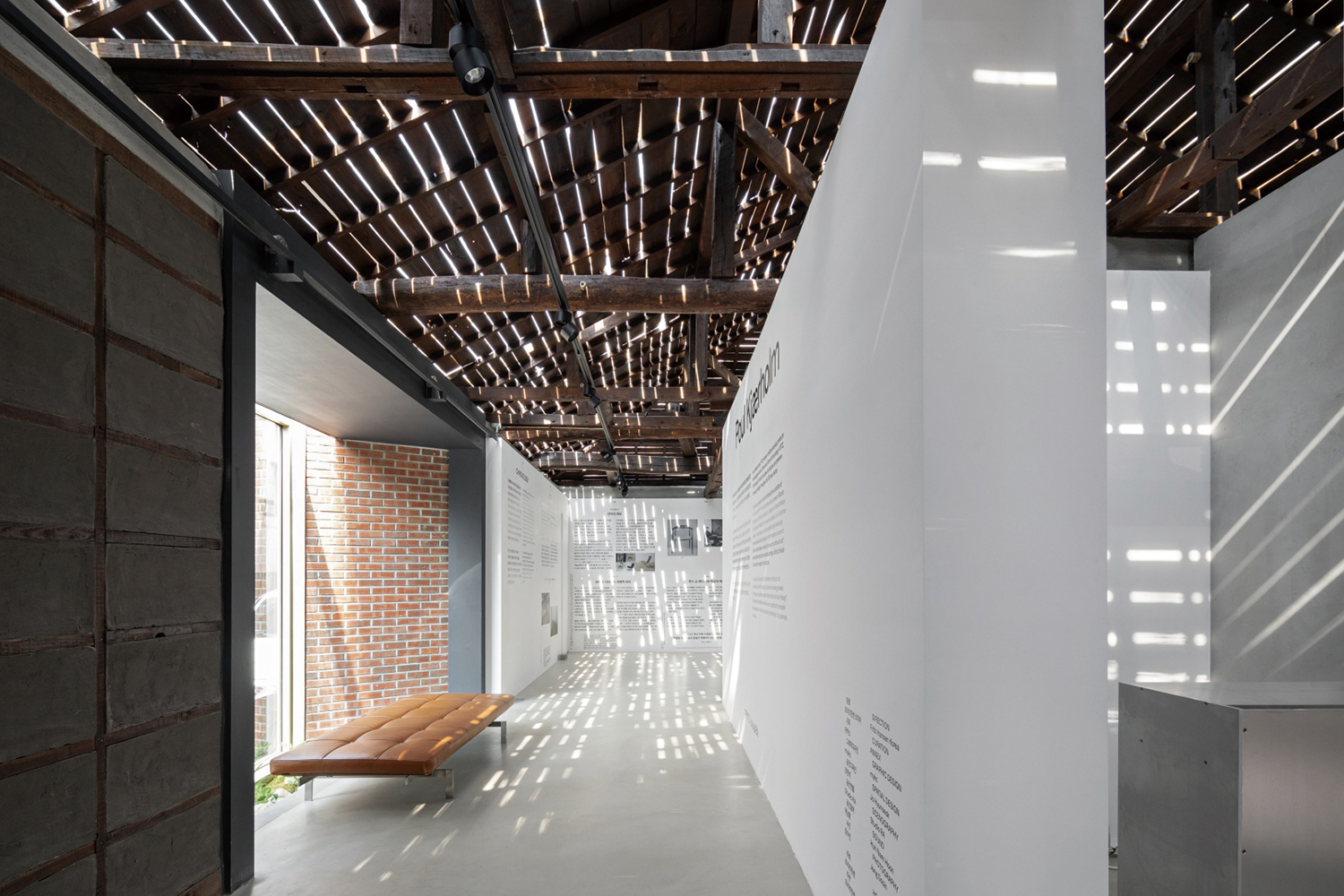
Exhibition views of ‘Poul Kjærholm’ (the interior of Building A)
Bang Yukyung: How did you draw on the characteristics of the space for the exhibition?
Kim Green: We reflected on the change in mood between Building A and B in the exhibition layout.
In Building A, we showed only informational texts about the designers and the design company without the connected physcial works, and in Building B, we gradually present notions of the furniture. The first scene in Building B is of disassembled furniture, emphasising Poul Kjærholm’s design language that explores materials and construction methods. The main body of the furniture appears on the second floor for the first time, and I intended the audience to find the information gained from the previous process while looking around the furniture. On the third floor, we show a new arrangement of the space with the furniture, opening up the world of Poul Kjærholm’s works who called himself a ‘furniture architect’.
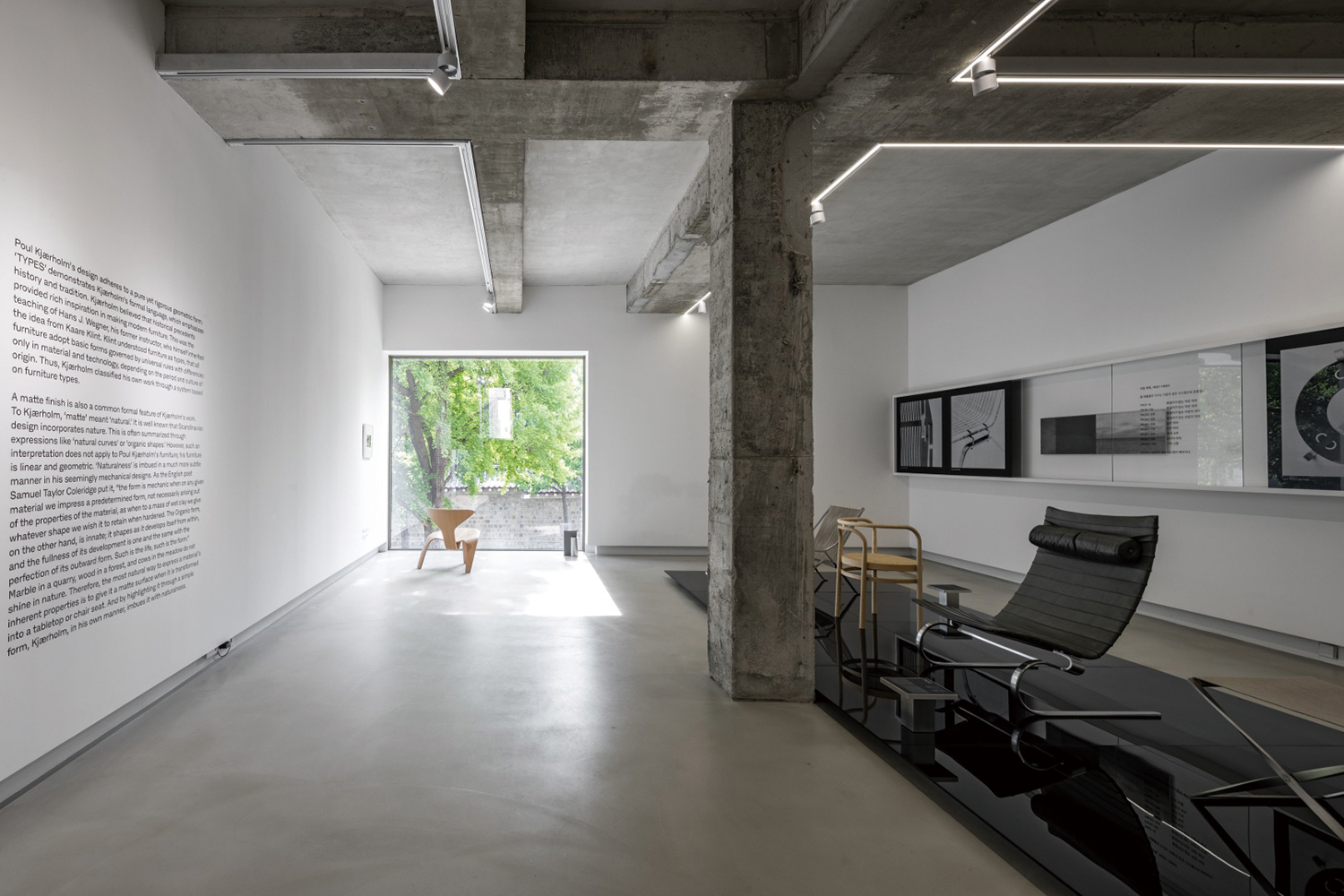
Exhibition views of ‘Poul Kjærholm’ (the second floor of Building B)
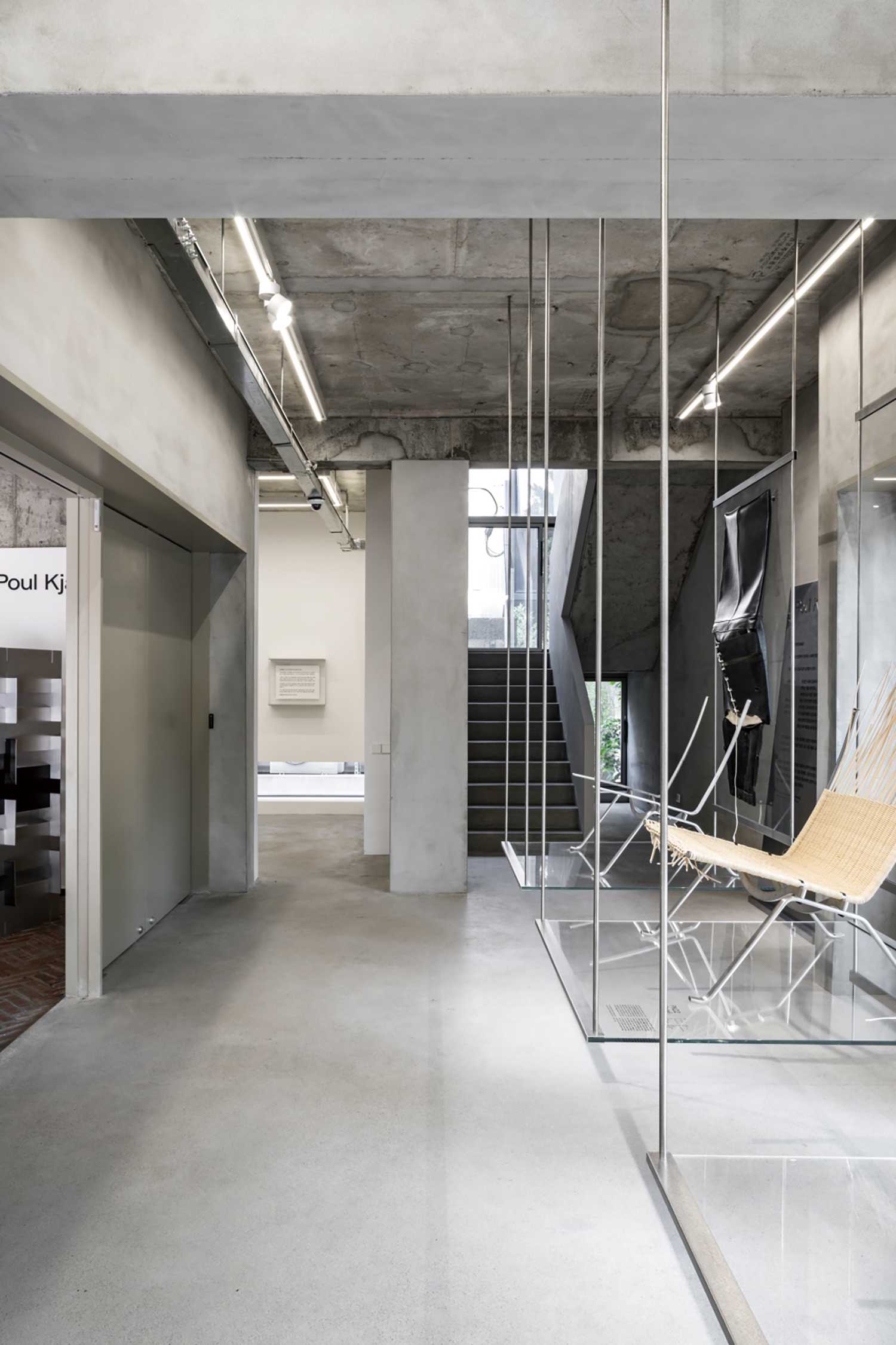
Exhibition views of ‘Poul Kjærholm’ (the first floor of Building B)
Bang Yukyung: How did you use elements such as the large windows and views?
Kim Green: The first floor of Building B has a sliding door that opens to the front yard with a ginkgo tree. We wanted to draw on this sense of openness, so we hung a glass seat from the ceiling. The second floor of Building B has one window showing the walls of Gyeongbokgung Palace, and the third floor has two windows towards Yeongchumun Gate and the ginkgo tree. As Poul Kjærholm’s chair is low, the viewing angle widens when you sit on it. We arranged furniture at each window so that visitors could sit and look out at the scenery.
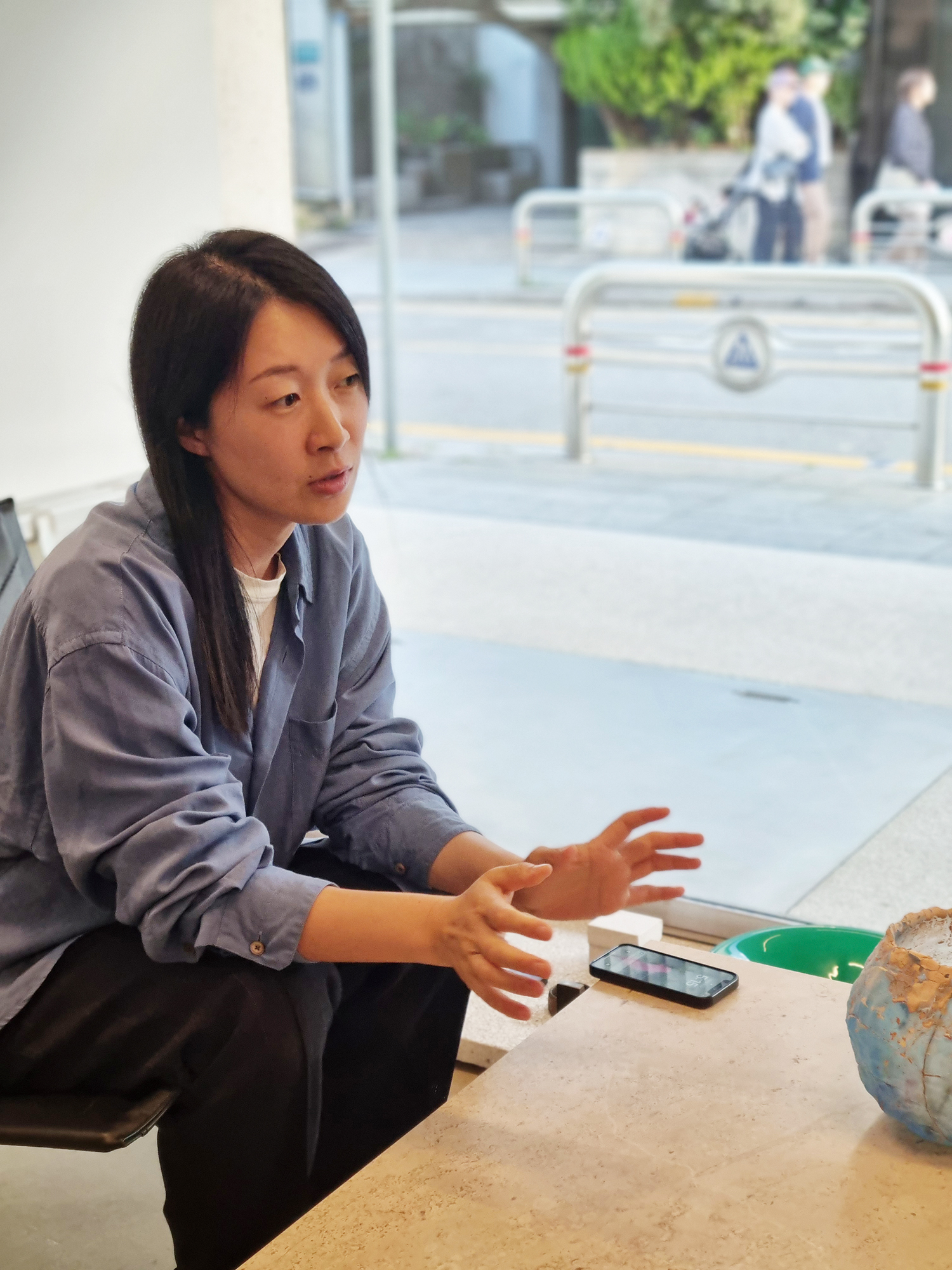
전시를 기획한 큐레이터 김그린 ©Bang Yukyung
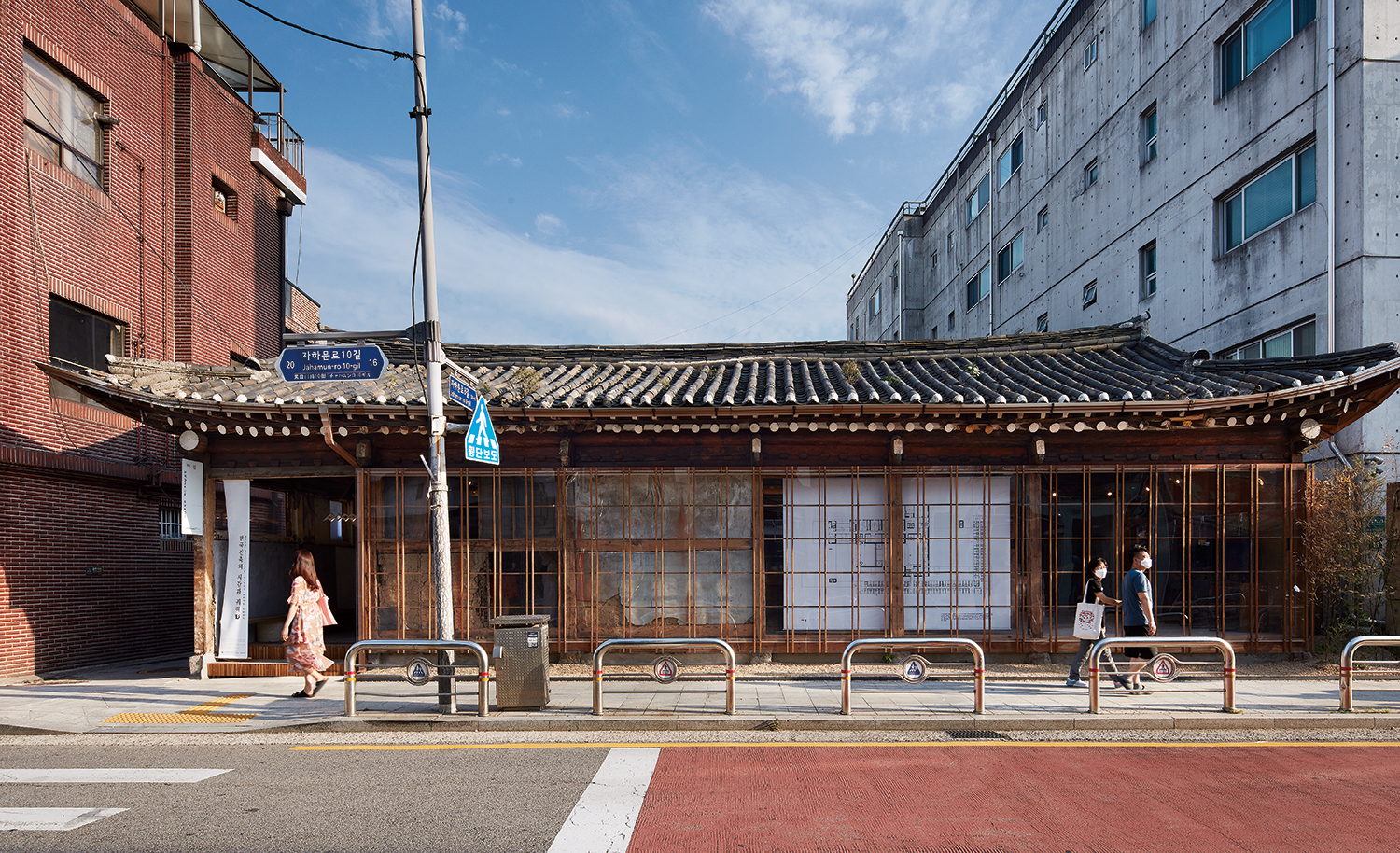
Mak Project Space. the existing cement walls were removed to expose the hanok to the street. ©Kim Yongkwan
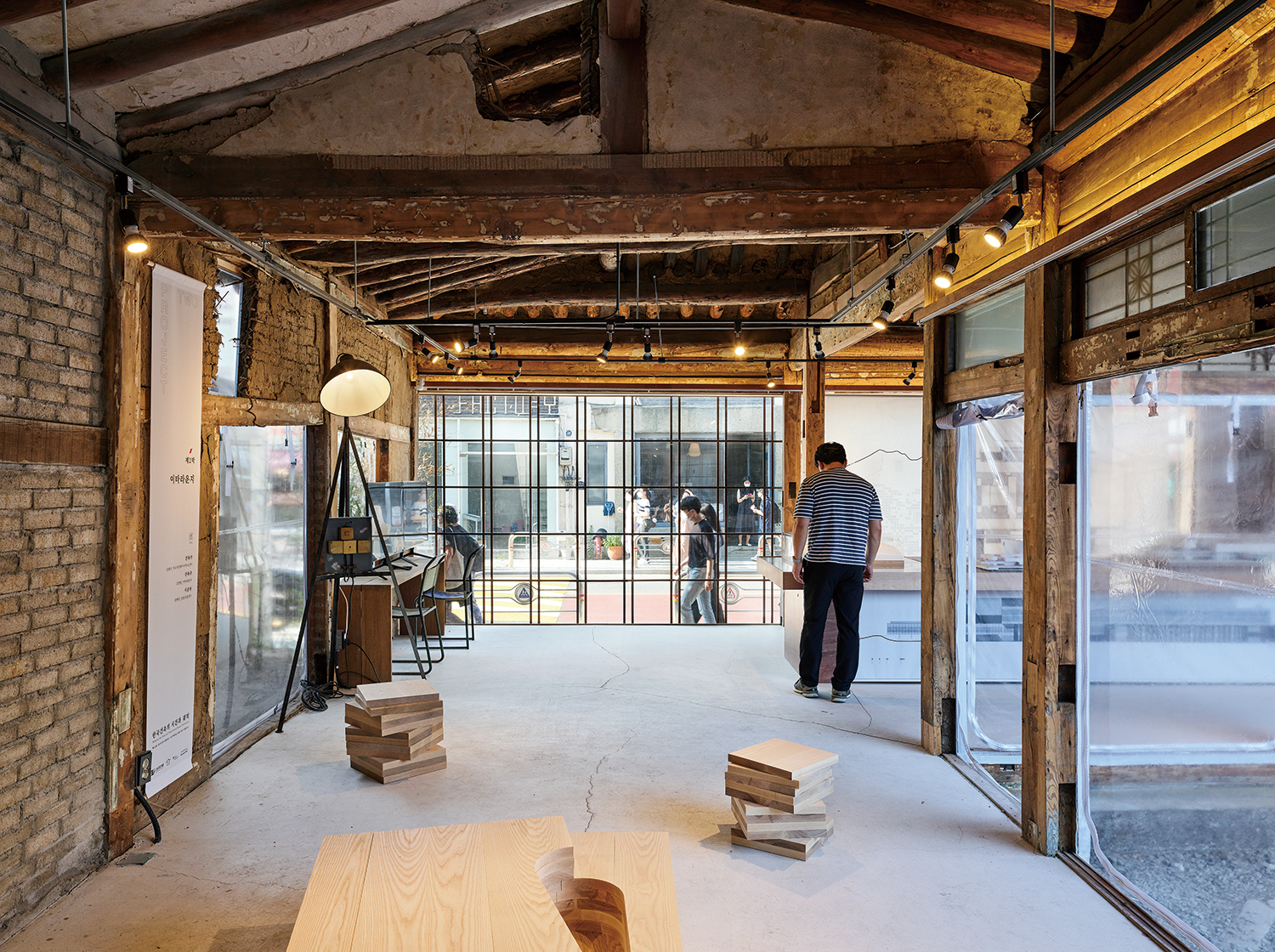
The interior space of the Mak Project Space ©Kim Yongkwan
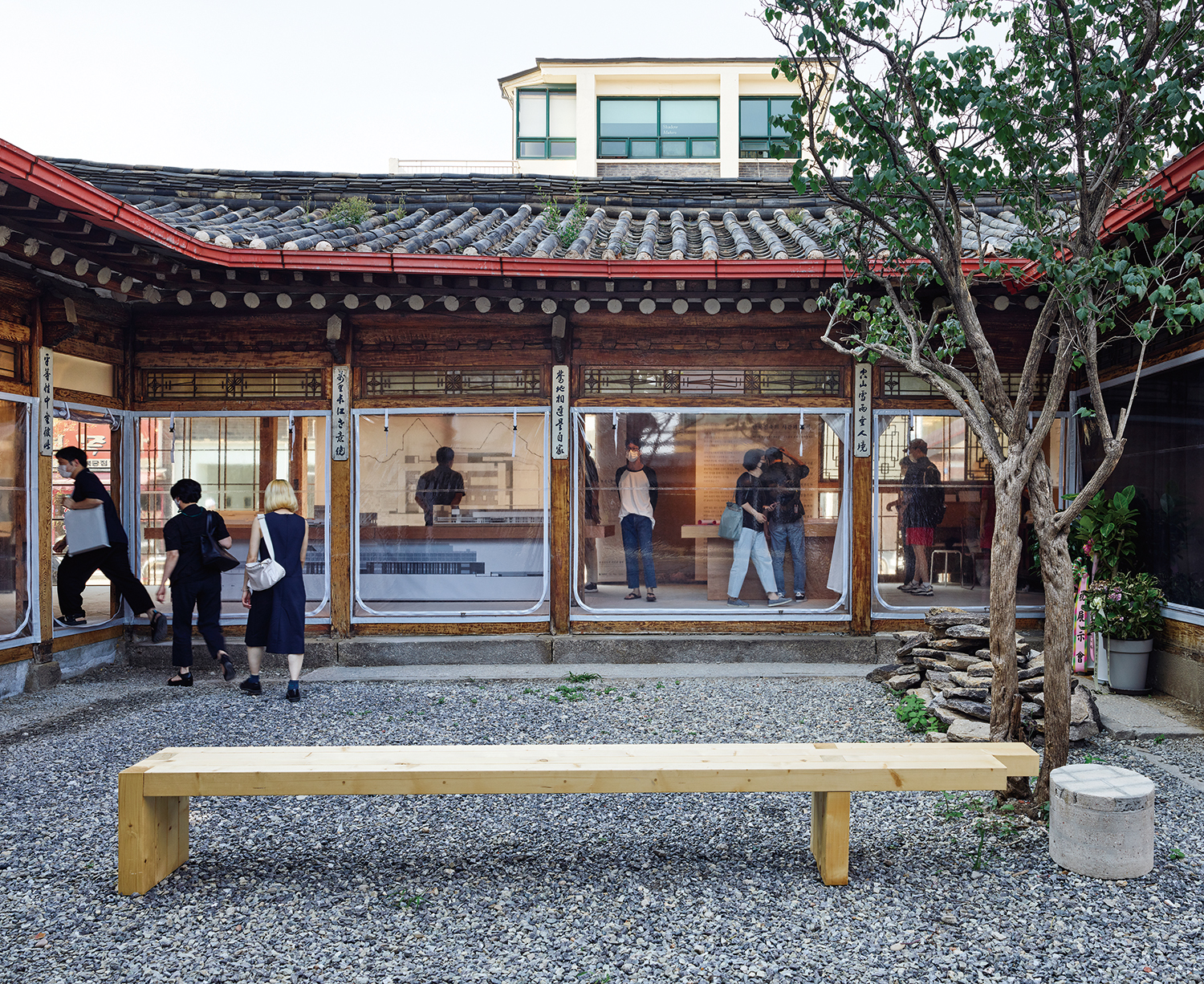
Courtyard of the Mak Project Space ©Kim Yongkwan
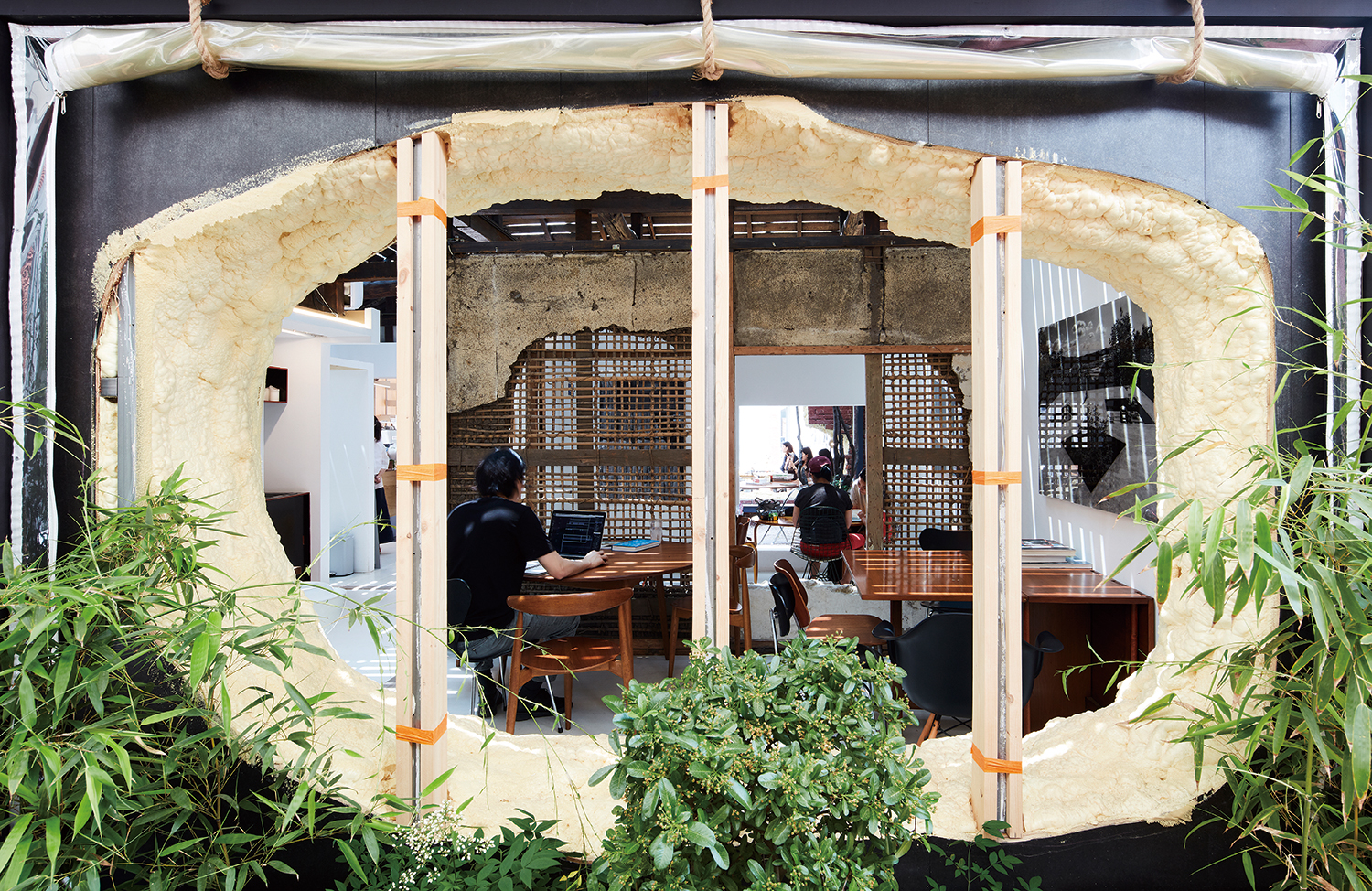
©Kim Yongkwan
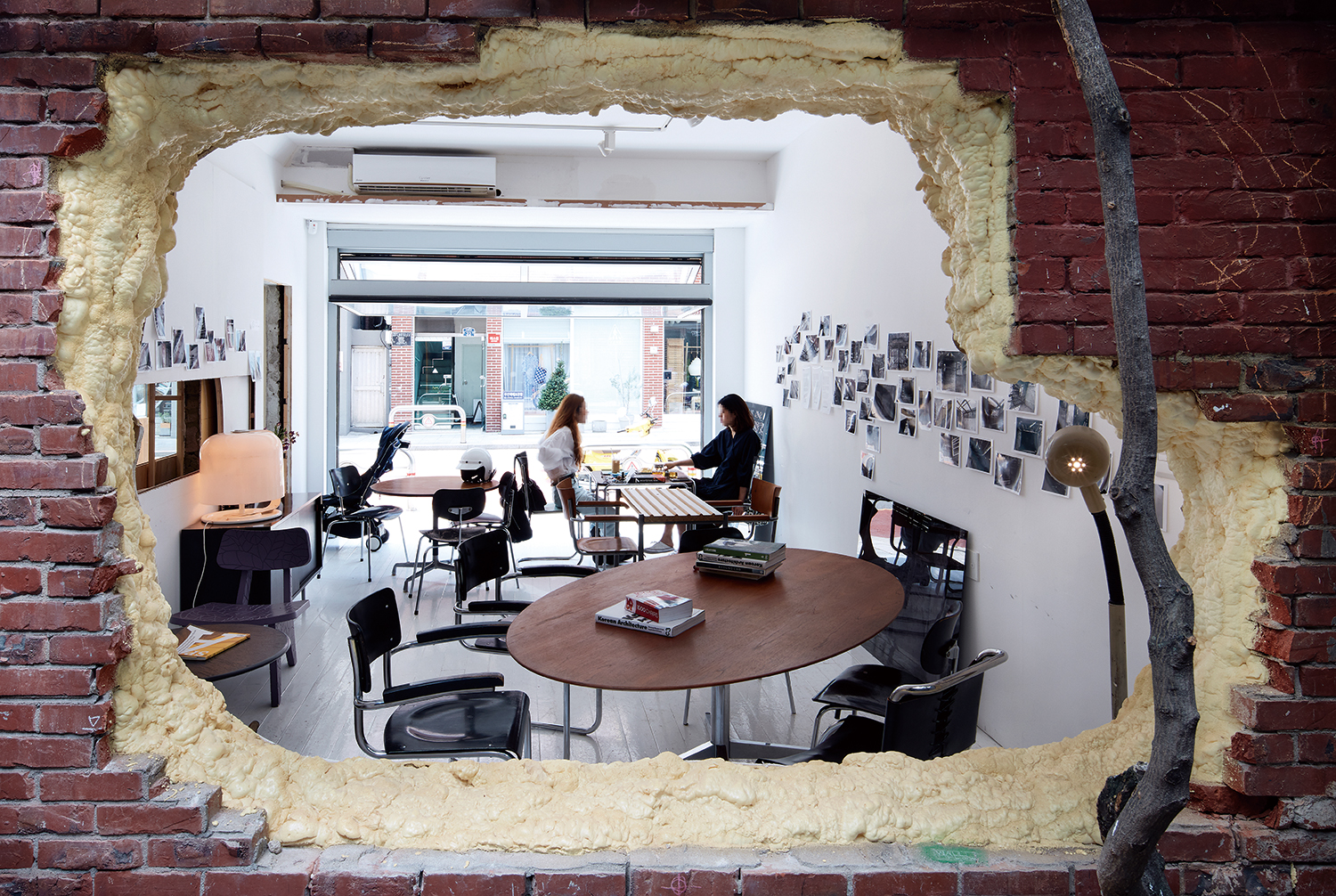
©Kim Yongkwan
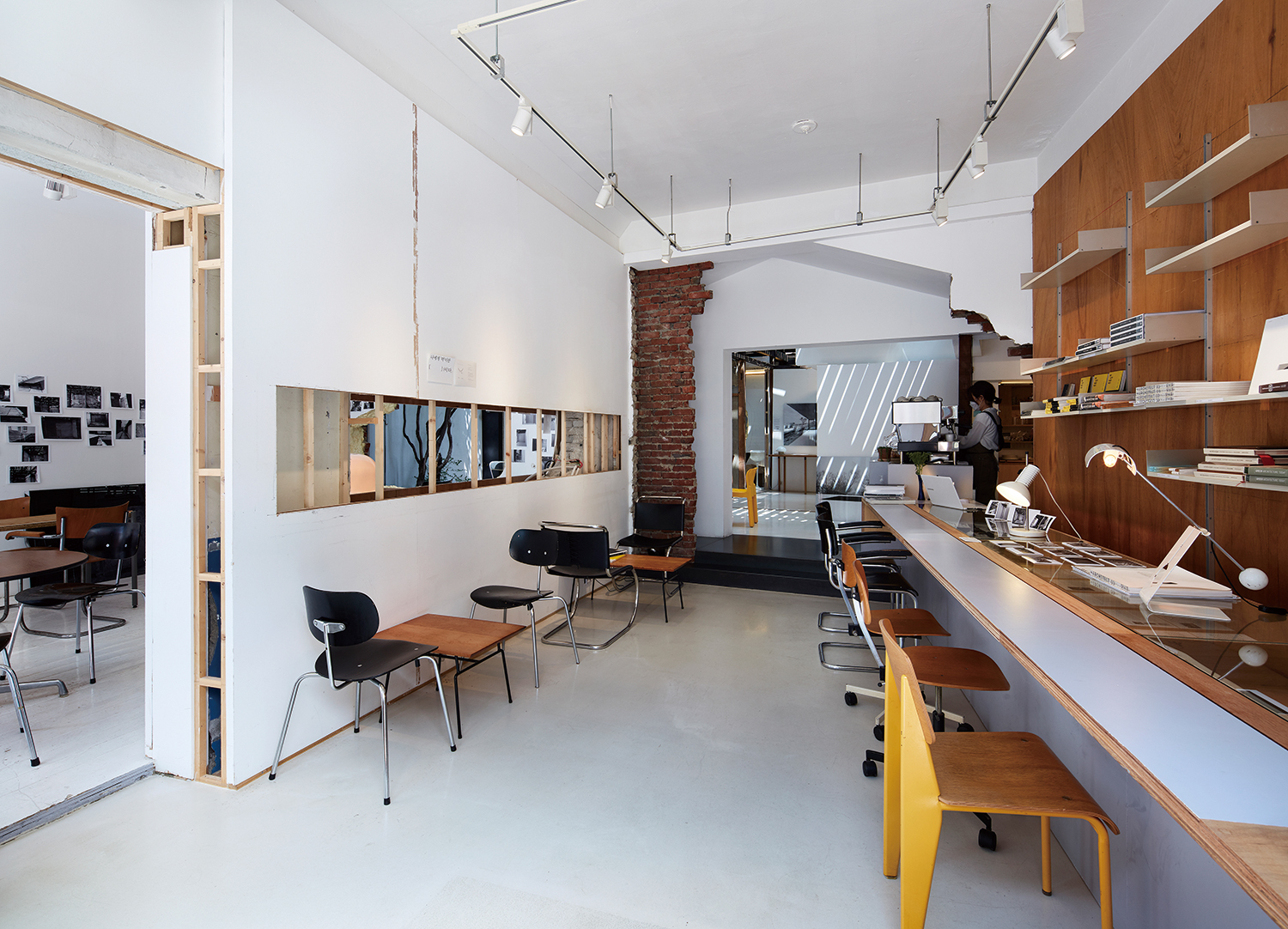
Onground Gallery/Café. The wall was removed to connect the roadside commercial building and hanok adjacent to the back of the building. ©Kim Yongkwan







